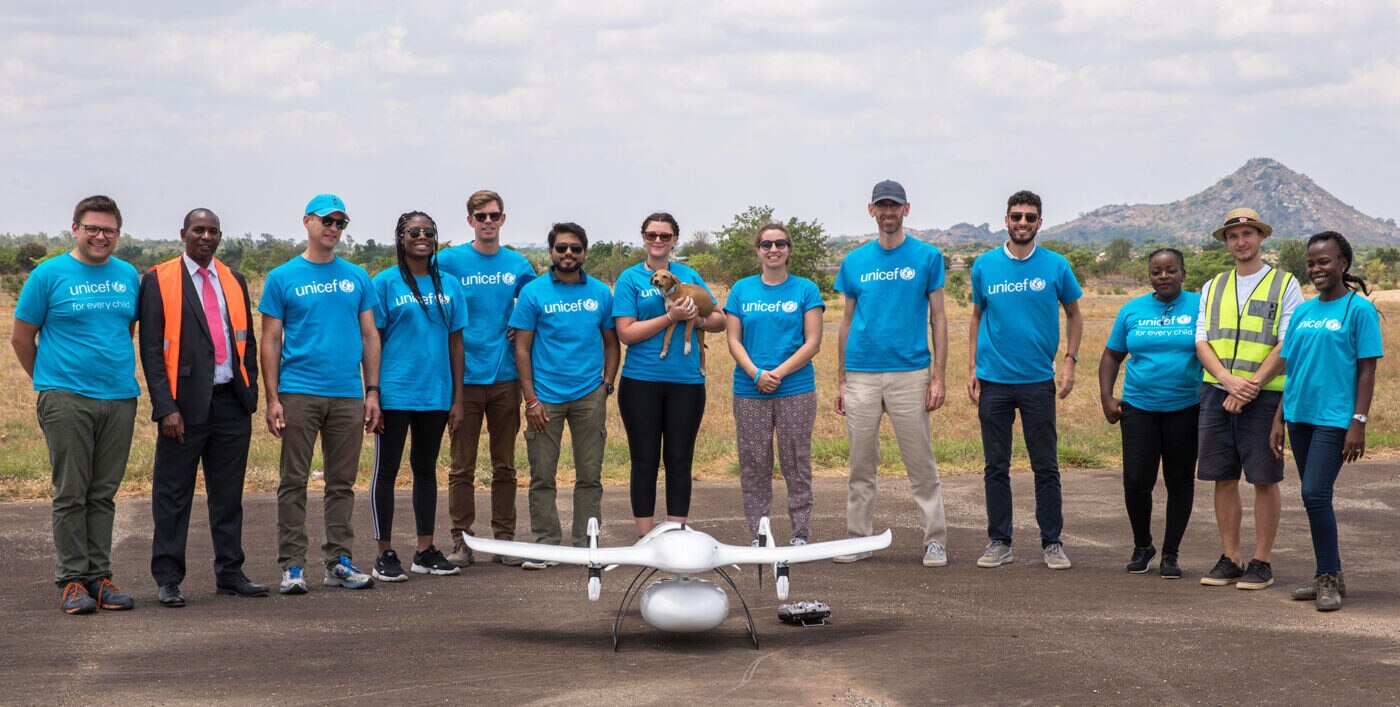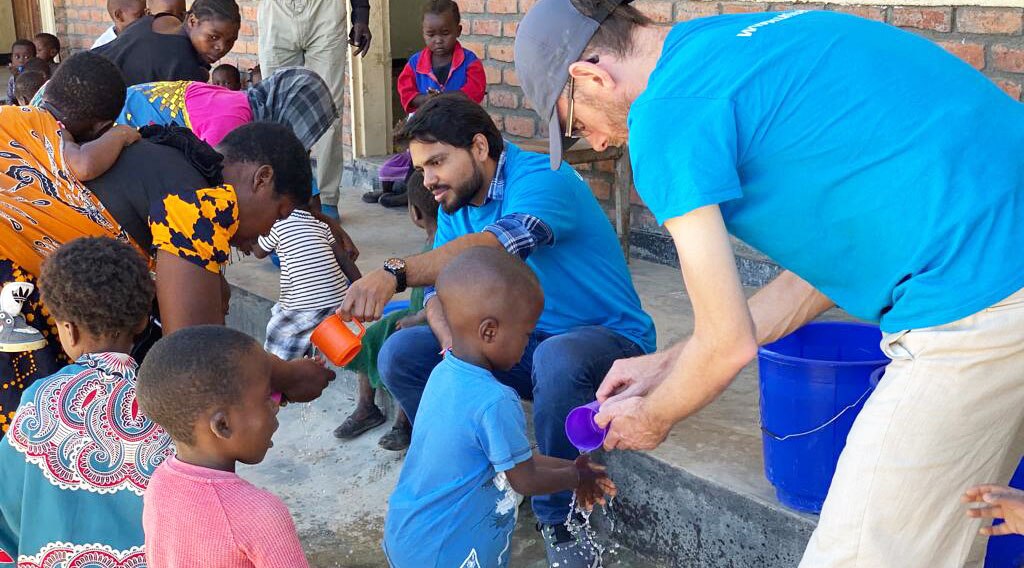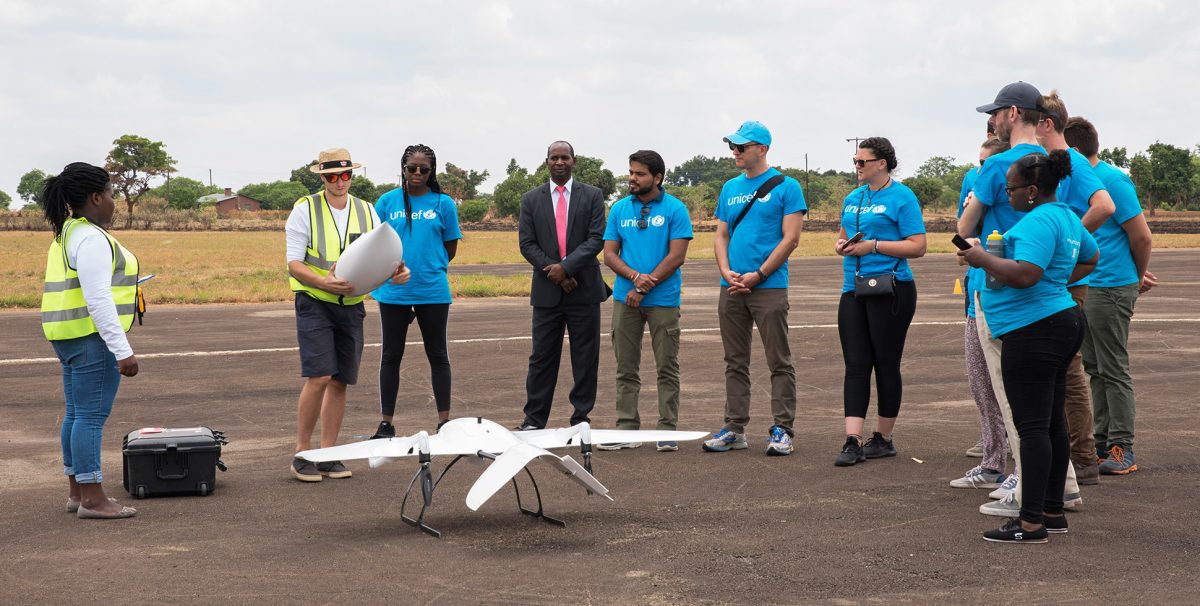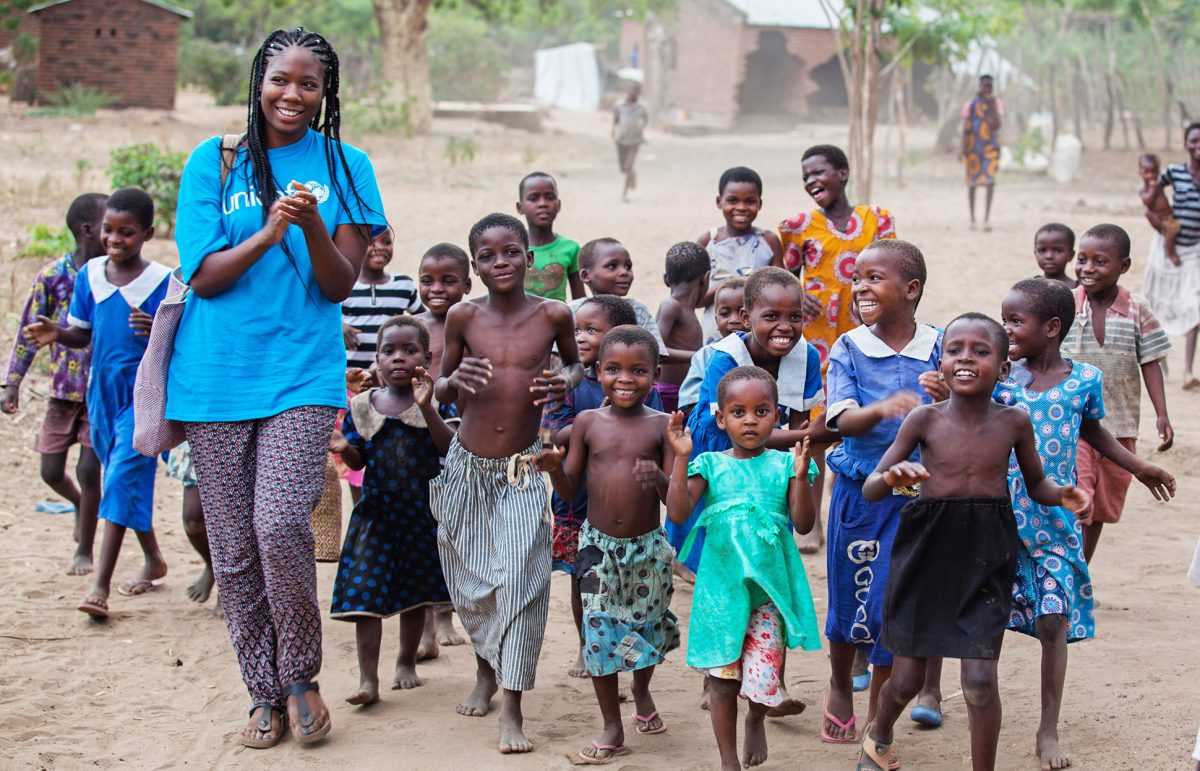Arm and UNICEF Malawi Look for High-tech Solutions to Local Problems

Malawi is one of the poorest countries in the world, ranking 171st out of 189 countries in the UN’s Human Development Index. Many of the country’s 18 million inhabitants lack basic access to healthcare, water, sanitation and education.
These problems were compounded in early 2019 when devastating flooding from Intense Tropical Cyclone Idai resulted in widespread loss of livestock, homes and crops. The spread of cholera and severe malnutrition that followed has had serious consequences for Malawi’s population, especially its women and children.
It was in one of the hardest-hit areas, Chikwawa District, that I—alongside members of the Arm sustainability team—found myself in November 2019. We were invited by UNICEF Malawi, an organization that has been providing humanitarian and developmental aid to children in Malawi since 1964. Having partnered with the United Nations agency in 2015, we were there to explore ways in which Arm might help to find technology solutions to problems faced by a nation with one of the lowest levels of technological adoption and Internet connectivity.
In particular, we were interested to see how a shift towards intelligent, efficient compute at the endpoint – technology that Arm has long been at the forefront of such as smartphones, wearables, drones and other relatively lightweight, portable devices – might enable solutions that might previously have been rendered impossible by cost, power or connectivity requirements.
Biomarker-tracking wearables
To those of us accustomed to visiting our local health facility whenever we’re under the weather, it’s almost impossible to imagine how difficult the same thing would be in Malawi. With fewer than 0.1 doctors per 1,000 people, half of the population must travel up to an hour to reach the nearest community health center and up to two-and-a-half hours to reach a hospital.
Without regular check-ups, warning signs in a child’s mental or physical development go unnoticed or are recognized at far too late a stage. It is, tragically, no surprise that 1 in 15 Malawian children die before they reach the age of five.
But wearable technology may provide a solution. Arm and UNICEF are conducting a longitudinal study of child development using Arm-powered wearable and sensor technologies to measure various biomarkers including temperature (to identify fever), facial expressions (to evaluate stress levels), EEG signals (to evaluate headaches), and EKG signals (to monitor heartbeats and proxies for infectious diseases).
This pilot initiative aims to monitor children in 6,000 rural households over 18 years—collecting physical and mental health data once a week in order to build a rich data picture of child development in this highly challenging environment.

High-quality child development data
The first phase of the pilot included wearables from four companies, including arm, chest, and head bands. Another company is exploring how artificial intelligence (AI) can be used to better track and predict health. Crucially, these wearables are cheap and reliable, providing high-quality data and lots of it. It’s essential for the rational, evidence-based decision-making that’s required to help children thrive.
The long-term goal is to examine all of the collected data in order to improve pre-emptive diagnosis of disease and better predict when and where outbreaks may occur, then use that information to design effective prevention programs. But we don’t have to wait for two decades to benefit from this project. Along the way, vital information on children’s mental and physiological development, as well as overall wellbeing, will allow parents, caregivers and community health workers to stay informed and, we hope, recognize warning signs while there’s still time.
Flood modelling using drones and AI
In June 2017, the Government of Malawi, along with UNICEF, launched a 40km-radius air corridor at Kasungu Aerodrome in central Malawi. It’s the first in Africa, and one of the first globally, dedicated to testing the potential of drones for humanitarian and development use.
Drones offer a unique aerial perspective of the landscape that was once only possible if you owned a plane or helicopter. The second UNICEF study we’re funding aims to use Arm-powered drone technology to give Malawi a better understanding of how its landscape will be affected by flooding through aerial mapping, ground truthing and Geographic Information Systems.
This flood modelling technology aims to better inform emergency preparedness through early warning systems. Aerial images are captured and processed using AI image recognition software to predict and model future flooding. It can also identify different types of buildings in order to build a picture of human occupation of an area and how flooding may affect it.

Drones are also being trialed as delivery vehicles for essential supplies and emergency items, traversing complex topography and harsh terrain that would prove too challenging for land-based logistics. During our visit to Kasungu Aerodrome we witnessed a successful field-test of a health delivery service, delivering a six-kilogram payload to a healthcare worker in a neighboring village 37 kilometers away.
Low-cost, high-impact solutions
Overall, the week we spent in Malawi was a great demonstration of how globally sourced, locally implemented innovation partnerships can deliver social impact at scale, made possible by organizations like UNICEF who have the infrastructure and government relationships already in place to deliver programs on the ground. Locally-driven initiatives such as the drone corridor are unique opportunities to partner to enable progress on humanitarian challenges, and we’re getting involved wherever we can—a speech-processing pilot for enhanced monitoring of the classroom environment is also in development.
As well as exploring how we could play a part in other technology-focused UNICEF projects, we visited Daeyang University in Lilongwe, Malawi’s capital city. There, we ran a collaborative workshop with students – which included introducing them to some of the newer applications of Arm technology such as natural language processing and ‘TinyML’ AI processing for ultra-low-power systems.
It’s these technologies that will enable Malawi’s innovators to develop low-cost, low-power solutions with a level of computational capability that only a few years ago would have been far too expensive or difficult to implement within a limited infrastructure, and it was hugely exciting to be able to explore these concepts with passionate, highly skilled students in fields such as computer science and electrical engineering. These young people will be the ones tasked with improving their country technologically, socially and financially – and it’s our hope that Arm technology will help enable them to do so.

Or course, there will be challenges along the way: technical hurdles remain around connectivity, battery life and, in the case of drones, physical safety. Perhaps the bigger battle will be in overcoming social hurdles such as communities’ reticence to adopt unknown technology. Yet in meeting local community leaders in rural villages that have been heavily affected by flooding, their desire to be able to assume responsibility for solving these problems was abundantly clear.
It’s my hope that the more prolific and capable this kind of technology becomes, the more it will be trusted, championed and seen as a force for good – enabling Malawi’s innovators to deliver real solutions that solve humanitarian challenges in a sustainable way.
Any re-use permitted for informational and non-commercial or personal use only.












